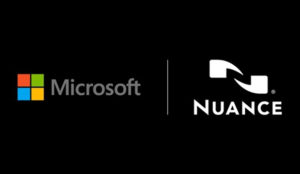
One of the common misconceptions about Software as a Service (SaaS) is that this new approach to software distribution and user adoption is at odds with the preferences and best practices of the IT organization. The reality is that SaaS is increasingly being viewed as a savior for IT.
A longstanding goal of most CIOs is better aligning IT with the business objectives of the overall corporation. Put in simple terms, this means doing a better job deploying and maintaining business applications which satisfy the needs of the company.
Yet, despite their efforts, most IT organizations report that they spend 75-80 percent of their time “fire-fighting,” or reacting to problems in an attempt to simply keep their software and systems up and running. This leaves little time to support strategic initiatives or foster real innovations.
New Approach Necessary
Given the fact that most legacy applications are not architected to respond to the escalating demands of a rapidly changing workplace, keeping these applications up and running isn’t meeting the needs of the organization in an increasingly difficult economic environment.
The steep implementation costs and inflexibility of legacy applications, combined with their centralized controls which make them difficult to access by an increasingly dispersed workforce, has made it obvious to a growing number of IT professionals that a new software acquisition and deployment approach is necessary.
In the past, IT professionals were apprehensive about SaaS because of its Web-based orientation. They were also uncertain about the operational and organizational implications of SaaS. They were also upset that SaaS was being acquired unilaterally by end-users and business units without IT involvement or approval. As a result, many IT departments have resisted SaaS deployments or at the very least have been reluctant to support business unit adoption of SaaS solutions.
Target Market
Many SaaS vendors intentionally avoided the IT decision-maker in their go-to-market strategies because they feared IT would resist or complicate the sales process. Instead, they designed their SaaS solutions to appeal to the end-user rather than the IT professional. They also packaged their solutions so they could be tried for free and adopted by a business unit without IT department involvement. And, they priced their SaaS solutions at a low enough pay-as-you-go, fee level so customers didn’t have to make significant capital expenditures that required IT input and approval.
These tactics succeeded in polarizing many IT professionals who felt their authority and responsibilities were being usurped.
However, IT professionals also found that SaaS solutions were also gaining a warm reception from business end-users and corporate executives because they worked with a fraction of the effort and cost involved with traditional on-premise applications.
Satisfied Customers
In fact, THINKstrategies’ surveys have found SaaS customer satisfaction rates exceed 90 percent. Few IT managers can boast comparable satisfaction ratings with their legacy applications.
So, now many IT managers are now supporting the adoption of SaaS solutions within their business units, and helping end-users and corporate executives select the right solutions to meet their business objectives.
In many cases this means doing an added level of due diligence regarding the SaaS vendor’s reliability and security capabilities, and ensuring that a proper service level agreement (SLA) is in place.
Room for IT
The trick for many IT professionals is getting involved in the evaluation and selection process without needlessly complicating and extending it.
Now, a new generation of SaaS solutions are emerging which is specifically aimed at helping IT professionals perform their day-to-day responsibilities easier and more economically. There are SaaS-based desktop, helpdesk, security, storage and performance management solutions. These SaaS-based IT management solutions are being offered by relative start-ups, as well as established players like Cisco Systems, EMC and Symantec, among others.
The growing acceptance of SaaS by IT professionals will be a key driver for the broader ‘cloud computing’ market and will accelerate the successful and cost-effective adoption of SaaS by organizations of all sizes in the coming years.
Jeffrey M. Kaplan is the managing director of THINKstrategies and Founder of the SaaS Showplace. He can be reached at [email protected].






















































Social Media
See all Social Media